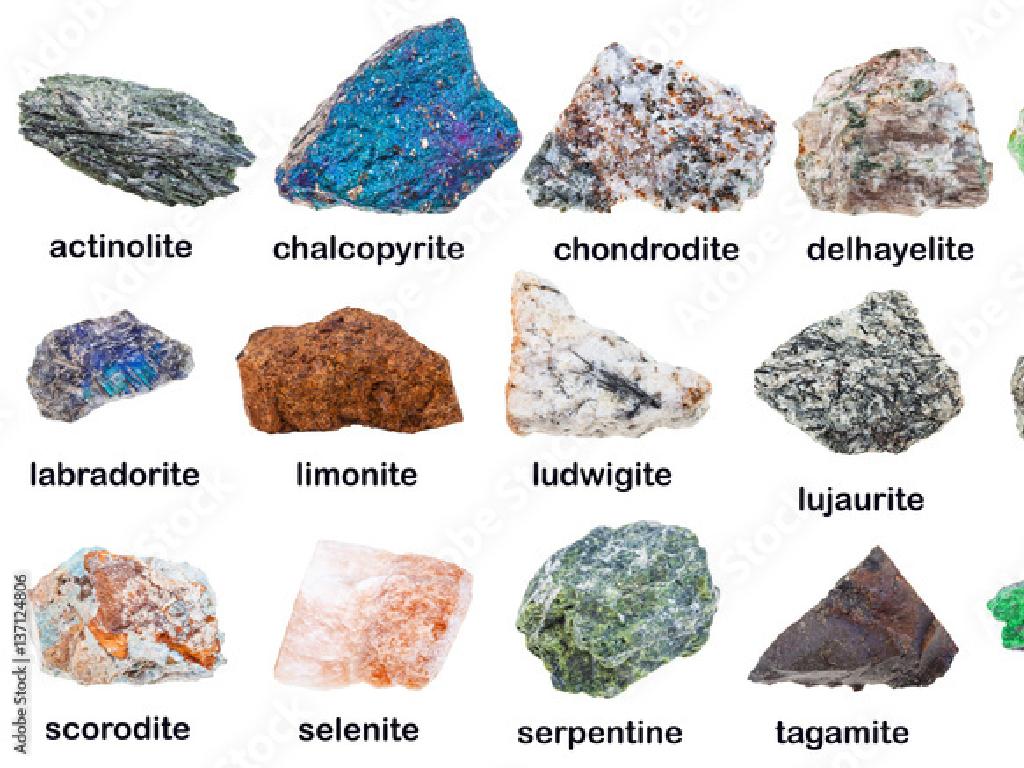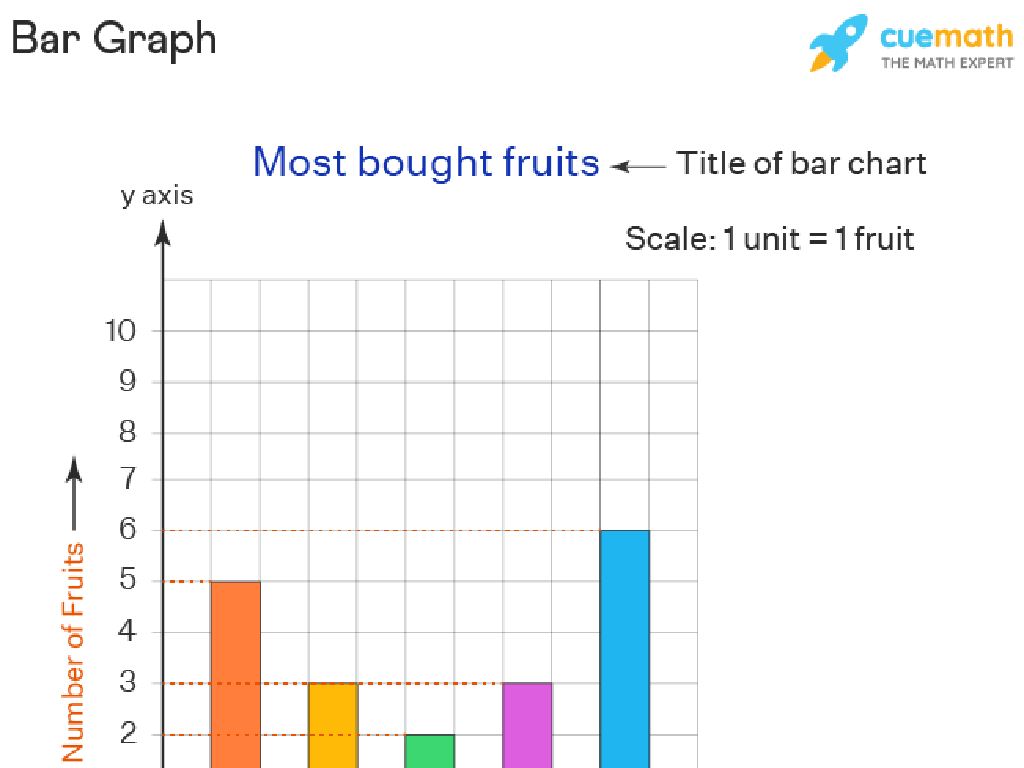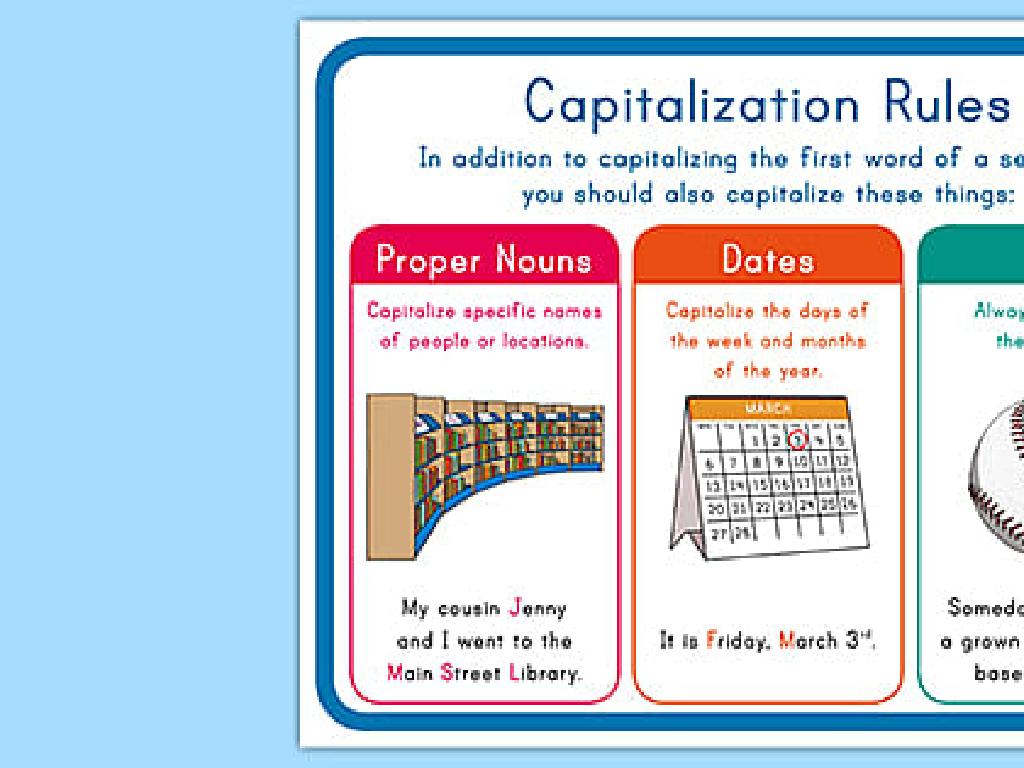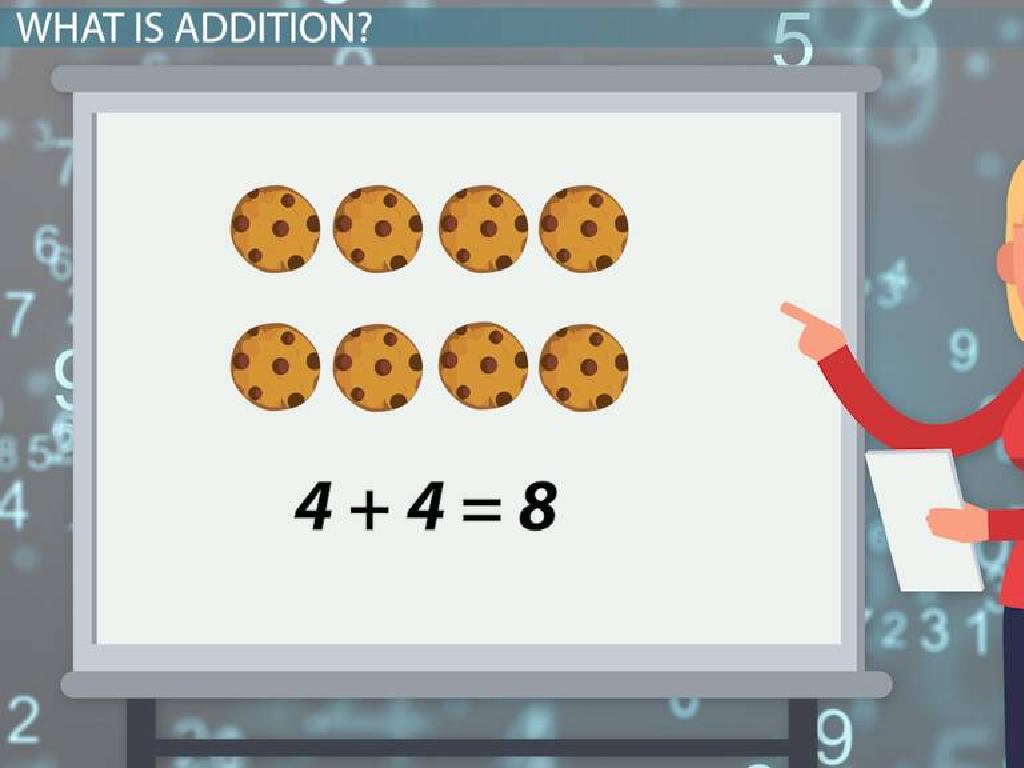Evaluate Numerical Expressions Involving Fractions
Subject: Math
Grade: Sixth grade
Topic: Mixed Operations: Fractions
Please LOG IN to download the presentation. Access is available to registered users only.
View More Content
Mixed Operations with Fractions
– Quick recap of fractions
– Fractions represent parts of a whole
– Evaluating expressions with fractions
– Use PEMDAS to solve expressions involving fractions
– Objective: Master mixed operations
– Aim to solve addition, subtraction, multiplication, division with fractions
– Practice problems for proficiency
|
Begin with a brief review of what fractions are and how they represent parts of a whole, ensuring students recall the basics. Move on to the main focus, which is evaluating numerical expressions that include fractions. Emphasize the importance of following the order of operations (PEMDAS) when working with mixed operations. The objective for the students is to become confident in solving problems that involve adding, subtracting, multiplying, and dividing fractions. Conclude with practice problems to reinforce the lesson and assess student understanding. Provide a variety of examples to ensure students get ample practice with different types of fraction operations.
Understanding Numerical Expressions with Fractions
– Define numerical expressions
– A mathematical phrase combining numbers and operations
– Examples with whole numbers
– 3 + 4 or 8 × 2 show how numbers and operations form expressions
– Introduce fractions in expressions
– Now include fractions: 1/2 + 3/4 or 2/5 × 4/7
– Practice with mixed operations
– Solve expressions like 3/5 + 1/4 – 2/3 using PEMDAS
|
Begin by defining numerical expressions as combinations of numbers and operations such as addition, subtraction, multiplication, and division. Use simple whole number examples to illustrate this concept. Then, introduce fractions into these expressions, explaining how the operations apply to them as well. Provide practice problems that involve mixed operations with fractions, emphasizing the importance of following the order of operations (PEMDAS). Encourage students to work through problems step-by-step and to check their work by estimating the reasonableness of their answers.
Mastering Fractions with PEMDAS
– Review PEMDAS sequence
– Parentheses, Exponents, Multiplication/Division, Addition/Subtraction
– Understand why order is crucial
– Changing the order changes the answer. E.g., 2 + 3 * 4 ` (2 + 3) * 4
– Apply PEMDAS to fractions
– Use PEMDAS in expressions like 1/2 + 1/3 * (3/4)^2
– Practice with examples
|
This slide is aimed at reinforcing the concept of the order of operations, commonly remembered by the acronym PEMDAS, and its application to fractions. Begin by reviewing each component of PEMDAS. Emphasize the importance of following the correct order by showing how different sequences can lead to different answers using simple numerical examples. Then, demonstrate how to apply the order of operations to expressions involving fractions, ensuring to include examples with different operations. Encourage students to solve these examples step by step and to practice with additional problems to solidify their understanding.
Adding and Subtracting Fractions
– Find a common denominator
– A shared denominator for combining fractions
– Add fractions with like denominators
– Simply add numerators when denominators match
– Add fractions with unlike denominators
– Use common denominator to add different denominators
– Subtract fractions with like and unlike denominators
– Numerator subtraction, same or different denominators
|
This slide introduces the fundamental steps for adding and subtracting fractions, a key skill in dealing with mixed operations involving fractions. Start by explaining the necessity of a common denominator when combining fractions, as it allows for direct comparison and calculation. When adding fractions with like denominators, students can simply add the numerators. For unlike denominators, guide them to find a common denominator before adding. The same principle applies to subtraction. Provide examples for each case and encourage students to practice with exercises. Emphasize the importance of simplifying the resulting fractions.
Multiplying and Dividing Fractions
– How to multiply fractions
– Multiply tops (numerators) and bottoms (denominators) separately
– How to divide fractions
– Invert the second fraction, then multiply as usual
– Simplify fractions after operations
– Reduce fractions to simplest form
– Practice with examples
|
When teaching students to multiply fractions, emphasize that they need to multiply the numerators (top numbers) together and the denominators (bottom numbers) together. For division, introduce the concept of reciprocals and demonstrate how to ‘flip’ the second fraction before multiplying. After performing the operations, guide students through the process of simplifying their answers by finding the greatest common divisor. Provide several examples for the students to work through, and encourage them to explain the process in their own words to solidify their understanding. This slide should serve as a foundation for students to practice and master these essential skills in working with fractions.
Combining Operations with Fractions
– Apply PEMDAS to fractions
– Follow order: Parentheses, Exponents, Multiplication/Division, Addition/Subtraction
– Solve mixed operation problems
– Example: (1/2 + 1/3) × 4/5 – solve step by step
– Check work using inverse operations
– Use subtraction to check addition, division to check multiplication
|
This slide aims to teach students how to correctly evaluate expressions with fractions using the order of operations (PEMDAS). Start by explaining each step of PEMDAS and how it applies to fractions. Provide a step-by-step guide to solving mixed operation problems, ensuring students understand how to approach each part of the expression. Emphasize the importance of checking their work using inverse operations, which can help verify the accuracy of their solutions. Encourage students to practice with various examples and to always remember to simplify their answers when possible.
Let’s Practice Together: Fractions
– Evaluate 1/2 + 3/4 × (2/3 ÷ 1/6)
– First, divide 2/3 by 1/6, then multiply by 3/4, and finally add 1/2.
– Solve (5/8 – 1/4) ÷ 3/5
– Subtract 1/4 from 5/8, then divide the result by 3/5.
– Discuss solving steps together
– Share your methods and compare with classmates.
– Understand order of operations
– Remember PEMDAS: Parentheses, Exponents, Multiplication and Division (from left to right), Addition and Subtraction (from left to right).
|
This slide is an interactive class activity designed to engage students in evaluating numerical expressions with fractions. Start by working through Example 1 as a class, ensuring to follow the order of operations. Encourage students to explain each step and the reasoning behind it. For Example 2, guide them through the subtraction and division, reinforcing the concept of inverting the divisor and multiplying when dividing fractions. The group discussion will allow students to articulate their understanding and learn from each other. As a teacher, facilitate the discussion and correct any misconceptions. Provide additional examples if time allows, and ensure each student is comfortable with the process before moving on.
Class Activity: Fraction Operations Challenge
– Solve mixed fraction problems in groups
– Each group presents their solutions
– Discuss various solving methods
– Compare methods like cross-multiplication vs. common denominators
– Explore different solutions together
– Understand there can be multiple ways to reach the correct answer
|
This activity is designed to foster collaborative learning and critical thinking as students work together to solve mixed fraction problems. Divide the class into small groups and provide each with a set of fraction problems that involve addition, subtraction, multiplication, and division. Encourage groups to discuss and employ different methods to find the solutions. After solving, each group will present their answers and explain their approach. Facilitate a class discussion to explore the various methods used and to highlight that different approaches can lead to the same correct answer. This will help students see the flexibility in mathematical problem-solving and appreciate the value of teamwork. Possible activities: 1) Fraction relay race, 2) Fraction ‘escape room’ puzzles, 3) ‘Fraction war’ card game, 4) Interactive fraction story problems.
Wrapping Up: Fractions Mastery
– Review of key fraction concepts
– Practice is crucial for skill
– Regular practice solidifies understanding
– Homework: Mixed operations worksheet
– Solve problems involving addition, subtraction, multiplication, and division of fractions
– Keep practicing for proficiency
|
As we conclude today’s lesson on evaluating numerical expressions with fractions, it’s important to emphasize the role of consistent practice in mastering these concepts. The homework assignment is a worksheet that includes a variety of problems requiring mixed operations with fractions. This will help students apply what they’ve learned in class and reinforce their skills. Encourage students to attempt all problems and remind them that practice is key to becoming proficient in working with fractions. For the next class, be prepared to review the homework answers and address any questions or difficulties the students may have encountered.





